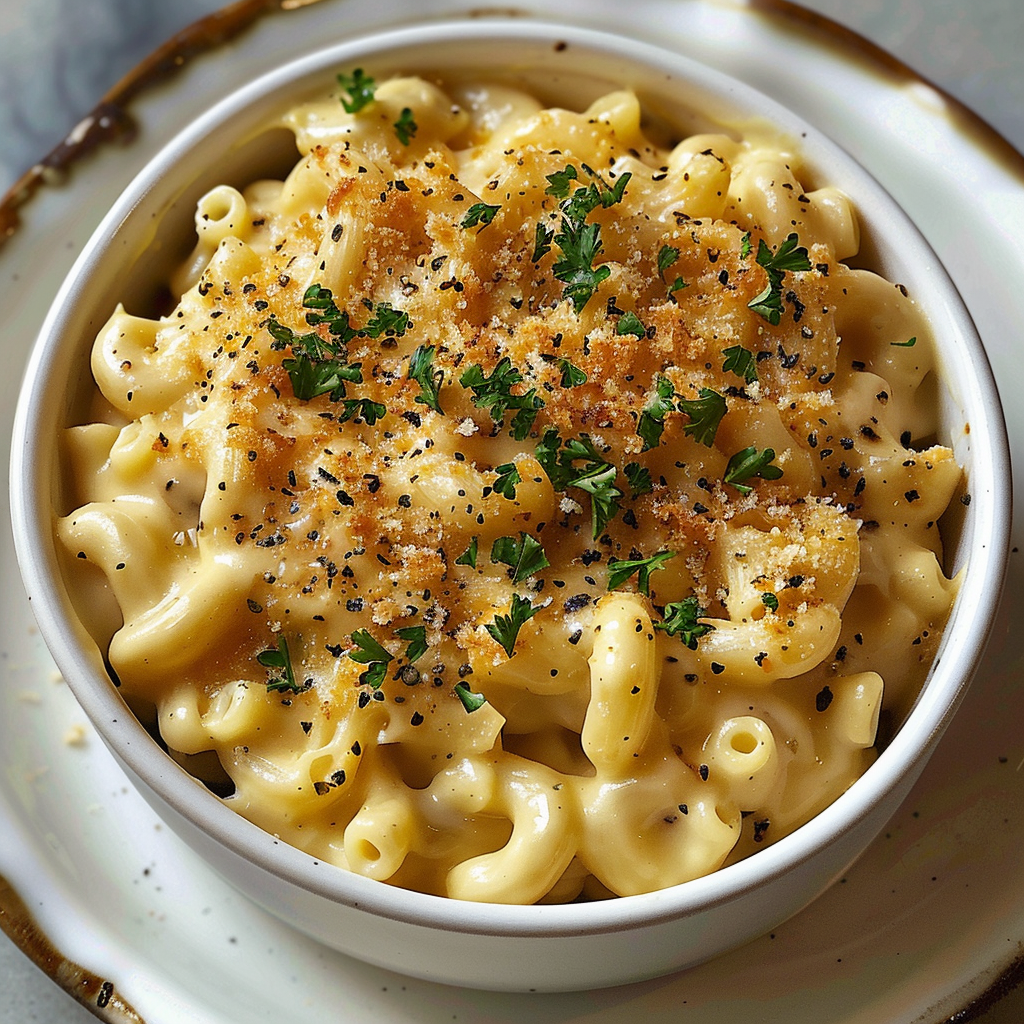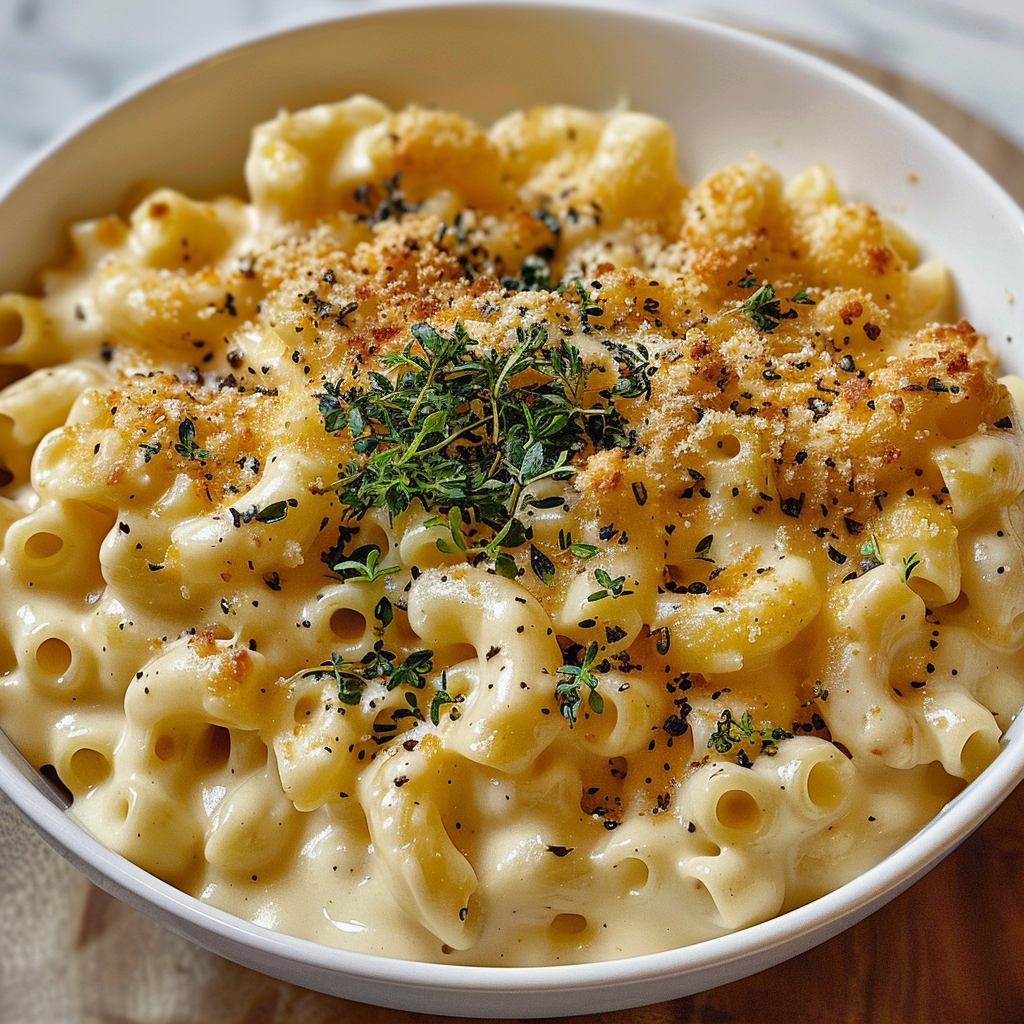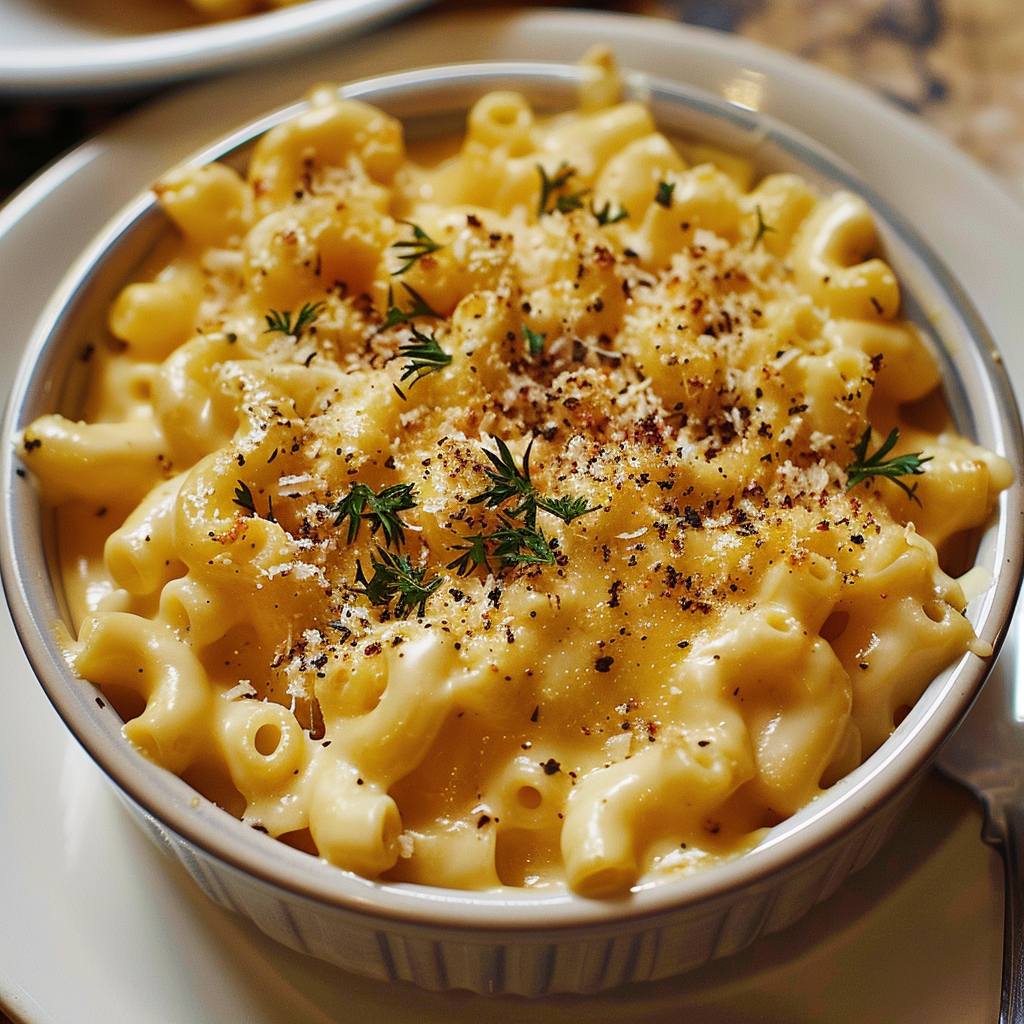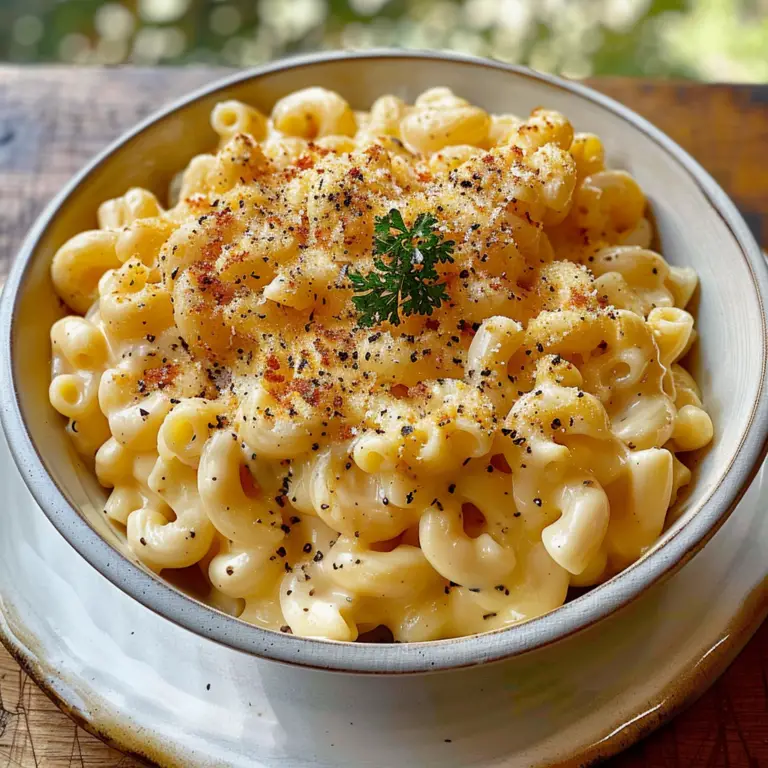Introduction to Simple Macaroni and Cheese
The Allure of Macaroni and Cheese
Macaroni and Cheese, a dish that has woven its way into the fabric of many cultures, stands as a testament to simple, hearty cuisine. Its origins, while debated, trace back to Italy, with the earliest known recipe found in a 13th-century cookbook. This dish crossed continents and evolved, embedding itself in American history when Thomas Jefferson introduced a version of it after encountering pasta in France and Italy. Today, it’s a staple in households and restaurants across the United States, celebrated for its comforting warmth and versatility.
The universal appeal of Macaroni and Cheese lies in its straightforward preparation and heartwarming taste. It’s a dish that transcends age, serving as a nostalgic meal for adults and a favorite among children. Its comfort food status is unparalleled, offering a sense of home and warmth with every bite. Whether it’s the main course or a side dish, Macaroni and Cheese has an enduring appeal that celebrates simplicity and flavor in every spoonful.
Essential Ingredients for Simple Macaroni and Cheese
Creating the perfect bowl of Macaroni and Cheese requires a few key ingredients:
- Pasta: Traditionally, elbow macaroni is used for its ability to hold sauce.
- Cheese: A blend of cheeses, such as sharp cheddar for depth of flavor and a creamy cheese like Gouda or American for smoothness.
- Milk and Butter: For the roux-based sauce, creating a rich and velvety texture.
- Flour: To thicken the sauce, ensuring it clings to the pasta.
- Seasonings: Salt, pepper, and a hint of mustard powder elevate the dish.
The selection of cheese is crucial, as it directly influences the flavor and creaminess of the dish. Sharp or mature cheddar offers a robust taste, while adding a softer, melt-friendly cheese ensures a gooey texture. The balance between these cheeses can be tailored to personal preference, making each Macaroni and Cheese unique. For insights into choosing the best cheese for your dish, consider consulting Bon Appétit’s guide to cheese selection.
Simplicity lies at the heart of this beloved dish, with its core ingredients serving as a canvas for culinary expression. Whether sticking to the basics or adding personal touches, the essence of Macaroni and Cheese is its welcoming, comforting embrace, shared across tables worldwide.

The Ultimate Simple Macaroni and Cheese Recipe
Creating the ultimate Simple Macaroni and Cheese requires following a few crucial steps meticulously to ensure every bite is as comforting and creamy as intended. Here’s a detailed guide to crafting this timeless dish.
Step-by-Step Cooking Guide
- Prep Your Ingredients:
- Gather all necessary ingredients: elbow macaroni, a blend of cheddar and creamy cheeses, milk, butter, flour, and seasonings.
- Cook the Pasta:
- Boil the elbow macaroni in salted water until it’s just al dente. Remember, it will continue to cook in the oven, so it’s important to keep it slightly firm.
- Make the Roux:
- In a separate pot, melt butter over medium heat, then whisk in flour until the mixture is smooth. This roux will thicken your cheese sauce.
- Create the Cheese Sauce:
- Gradually add milk to the roux, continuously stirring to prevent lumps. Once the mixture is smooth and thickened, lower the heat and add your cheeses, stirring until melted and combined. Season with salt, pepper, and a hint of mustard powder for depth.
- Combine Pasta and Cheese Sauce:
- Mix the cooked pasta into the cheese sauce, ensuring each piece is evenly coated.
- Bake to Perfection:
- Transfer the saucy macaroni into a buttered baking dish, sprinkle with extra cheese, and bake in a preheated oven at 350°F (175°C) until bubbly and golden brown on top, about 20 minutes.
Achieving the perfect cheese sauce consistency is pivotal. It should be velvety and cling to the pasta without being too thick or runny. For additional guidance on creating the perfect sauce, EatingWell provides expert advice on adjustments for a smoother sauce.
Expert Tips for Perfect Macaroni and Cheese Every Time
- Choosing the Right Pasta:
- Elbow macaroni is traditional, but any short pasta with grooves or holes to trap the sauce will work. The key is ensuring the pasta is conducive to holding as much cheesy goodness as possible.
- Secret to a Smooth and Creamy Sauce:
- The roux is the foundation. Cook it long enough to remove the raw flour taste, but not so long that it darkens, which can affect the sauce’s flavor and texture.
- Adding cold milk to the hot roux gradually while whisking prevents lumps. Let the sauce simmer until it thickens enough to coat the back of a spoon.
- Use freshly grated cheese instead of pre-shredded, as it melts more smoothly and doesn’t contain anti-caking agents that can make the sauce grainy.
Understanding these nuances and applying them with care will elevate your Simple Macaroni and Cheese from a mere dish to an exquisite culinary experience. Each step, from pasta selection to sauce creation, plays a crucial role in achieving that iconic taste and texture we all love.

Variations to Spice Up Your Macaroni and Cheese
Simple Macaroni and Cheese is a canvas waiting for your creative touch. Here are some ideas to enhance this classic dish:
- Add-Ins:
- Crisp bacon or pancetta for a salty crunch.
- Roasted vegetables like broccoli or cherry tomatoes for a hint of sweetness and color.
- Lobster or crab meat for a luxurious twist.
- Toppings:
- A breadcrumb and parmesan mix for extra crunch.
- Jalapeños and a drizzle of hot sauce for those who like it spicy.
- Truffle oil for a gourmet finish.
- Dietary Modifications:
- Gluten-Free: Use gluten-free pasta and thicken the sauce with cornstarch instead of flour.
- Vegan: Substitute dairy products with plant-based alternatives and use nutritional yeast for a cheesy flavor.
For more on adapting recipes to dietary needs, Food Allergy Research & Education offers comprehensive guides on gluten-free options.
Pairing Suggestions
Complement your Macaroni and Cheese with:
- Side Dishes:
- A crisp green salad to balance the richness.
- Garlic bread or soft dinner rolls for dipping.
- Drinks:
- A light, crisp beer or a glass of chardonnay pairs beautifully.
- For a non-alcoholic option, a sparkling lemonade refreshes the palate.
Consider making Macaroni and Cheese a heartier meal by adding proteins directly into the dish, transforming it into a one-pot wonder.
Macaroni and Cheese for Every Occasion
Macaroni and Cheese can dress up or down for any event:
- Casual Gatherings:
- Serve in individual cups for easy, mess-free enjoyment.
- A macaroni cheese bar with various toppings lets guests customize their dish.
- Formal Events:
- Offer a sophisticated version with gourmet cheeses and add-ins like truffle or lobster.
- Large Batches:
- When cooking in bulk, undercook the pasta slightly as it will continue to cook when reheated.
- Use a deep, wide dish for even baking and easy serving.
For large gatherings, consider Epicurious for recipes tailored for bigger groups, ensuring everyone gets a taste of this comforting classic.
Macaroni and Cheese’s versatility makes it the perfect dish for any occasion, from weeknight dinners to special celebrations, with each variation offering a new way to enjoy this timeless comfort food.

FAQs: Mastering Macaroni and Cheese
Tackling common issues can turn your Macaroni and Cheese experience from good to great. Here’s how to address some frequent concerns:
- Preventing a Grainy Sauce:
- Use freshly grated cheese instead of pre-packaged shreds to avoid additives that can cause graininess.
- Heat the sauce gently; high heat can cause the proteins in the cheese to seize up, leading to a gritty texture.
- Achieving the Perfect Pasta Texture:
- Cook pasta until just al dente; it will continue to cook in the sauce or oven, preventing it from becoming mushy.
- Storing Leftovers:
- Cool the macaroni and cheese to room temperature before covering it and placing it in the refrigerator. It’s best enjoyed within 3 days.
- Reheating for Best Results:
- Reheat in the oven at 350°F (175°C) covered with aluminum foil to prevent drying out. Alternatively, add a splash of milk when reheating on the stove to revive the sauce’s creaminess.
For further tips on storing and reheating, The Kitchn’s guide to leftover macaroni and cheese is an excellent resource.
Addressing these FAQs ensures your Macaroni and Cheese remains a delightful comfort food, whether freshly made or enjoyed as a leftover.

